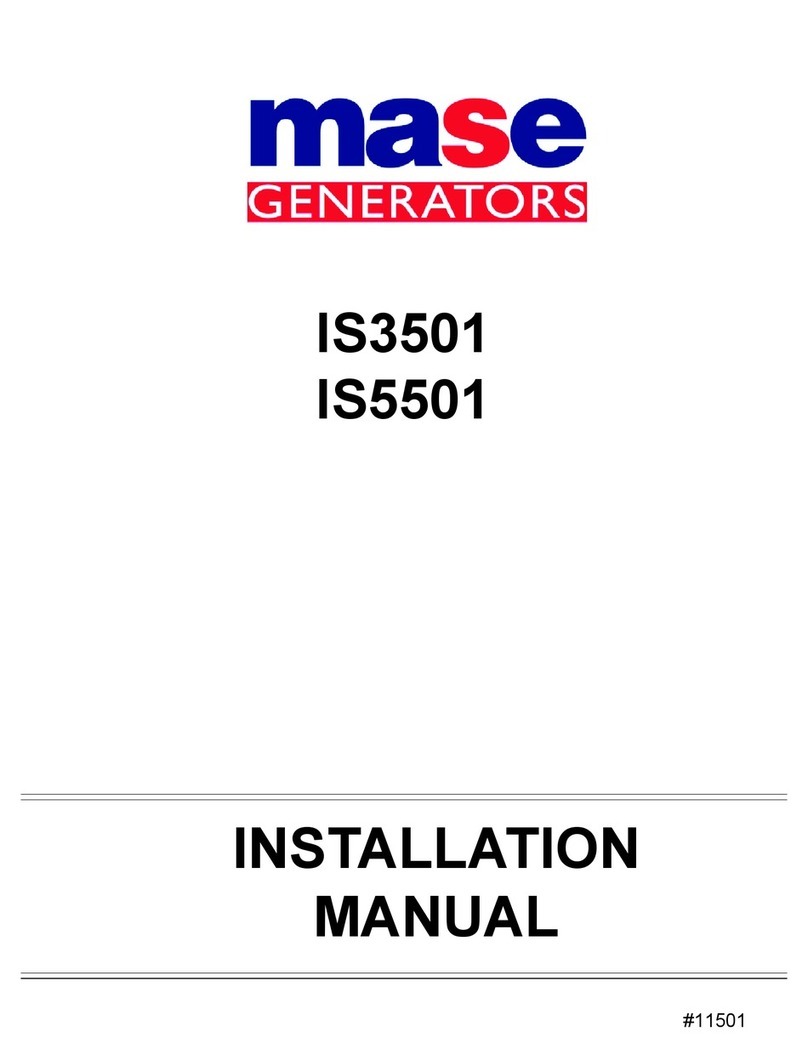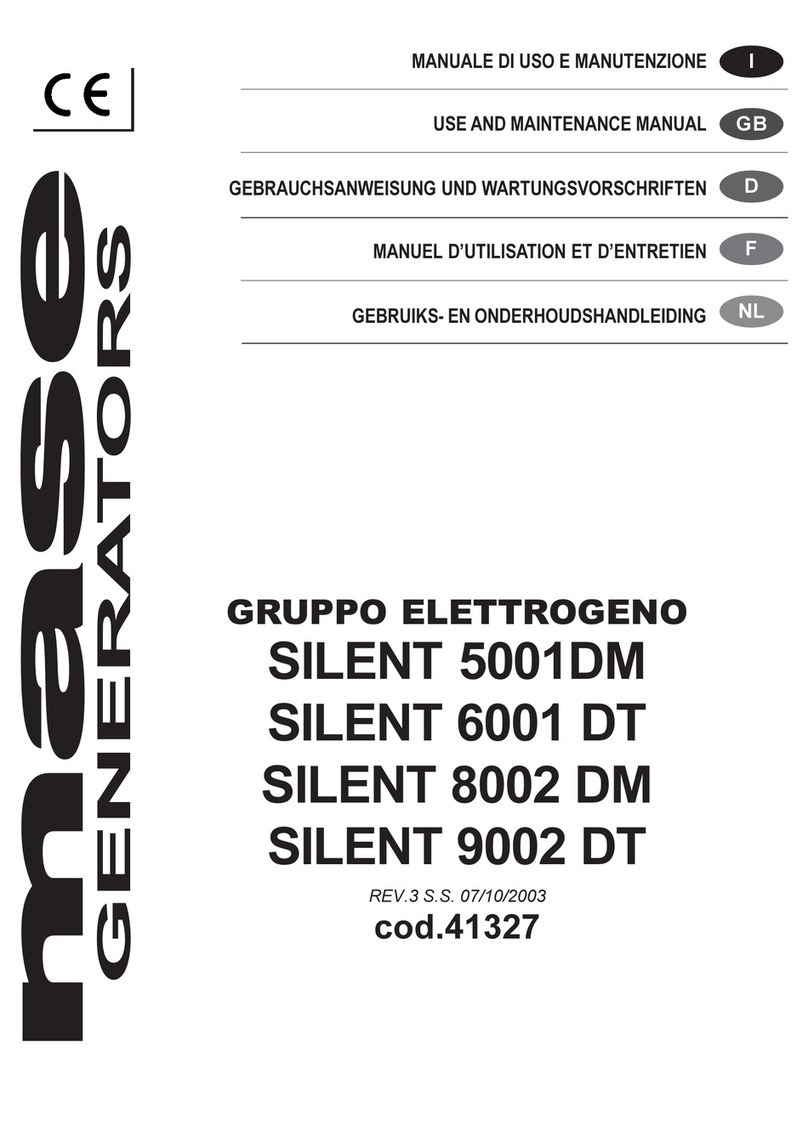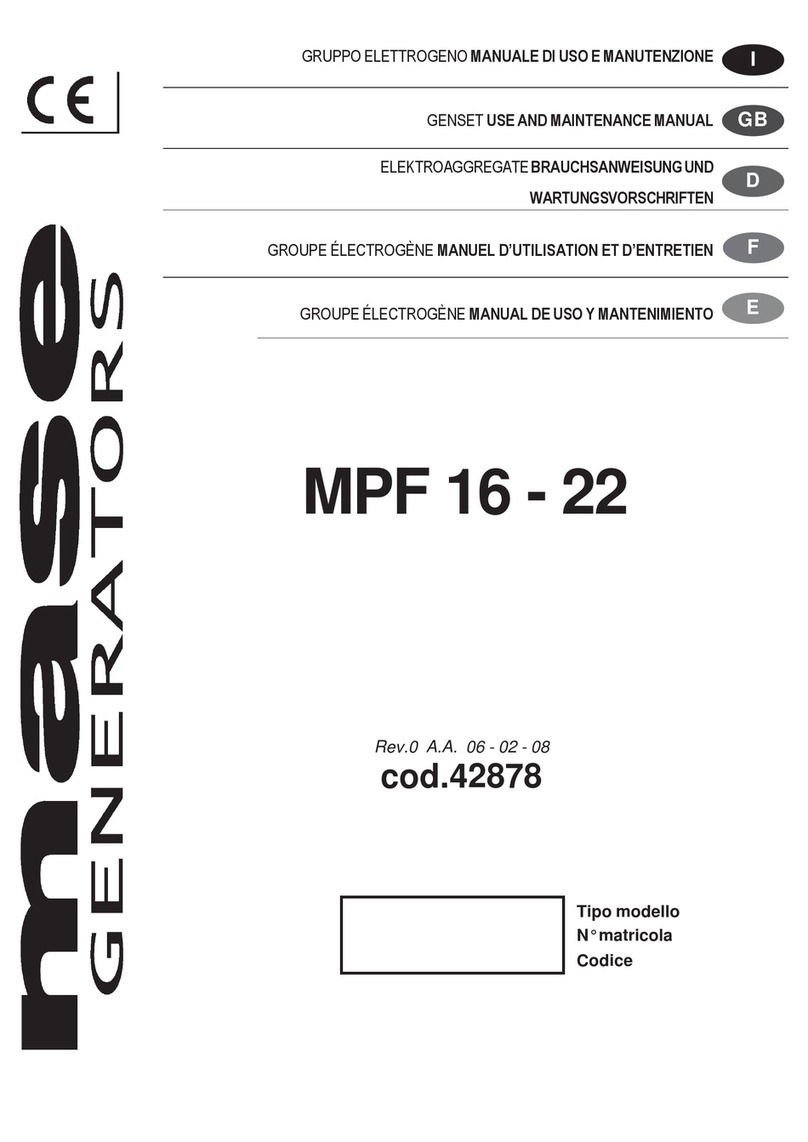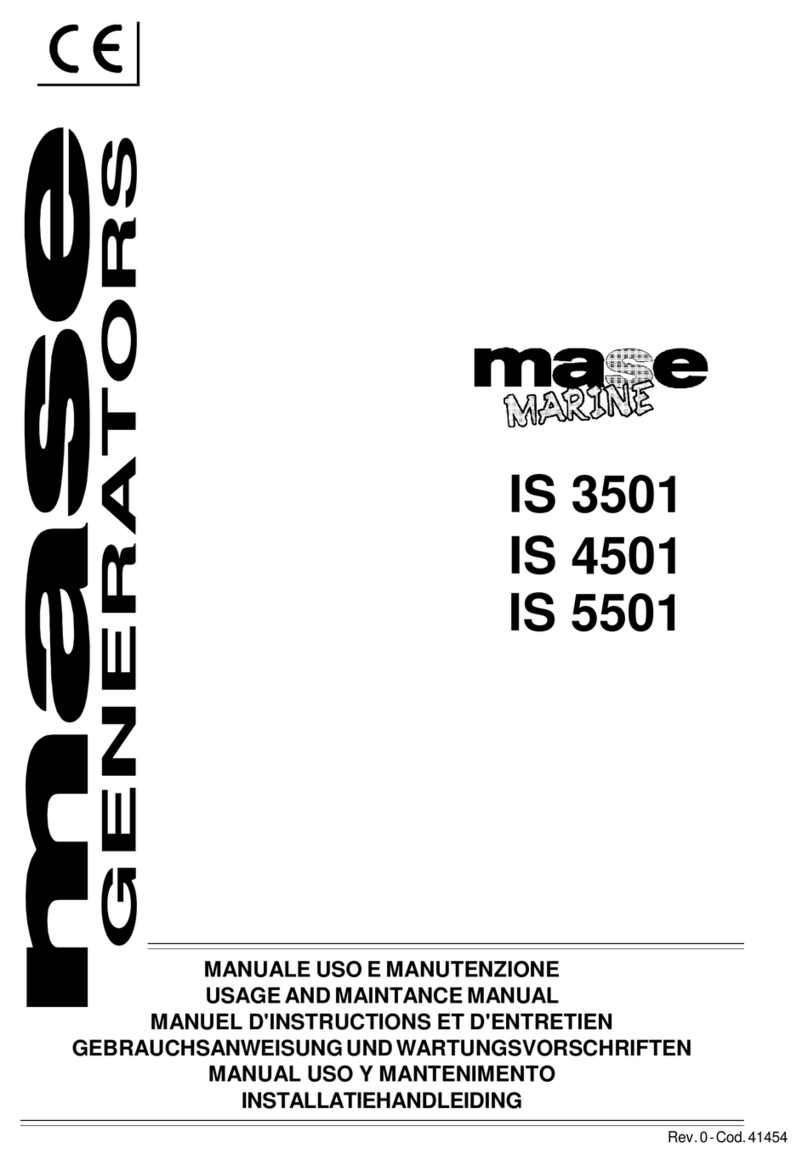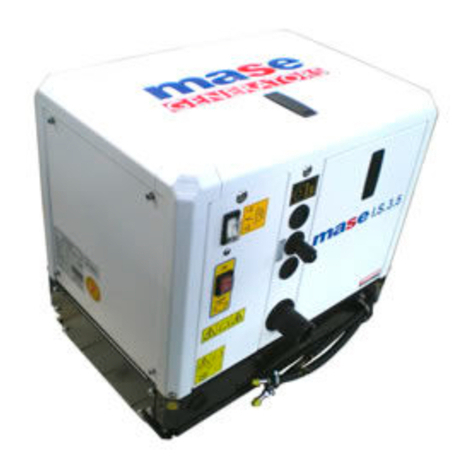-41-
GB
EA 25 H
1.3 General danger information
• It is recommended to learn how to stop and operate all the controls.
• Do not allow unqualified personnel to use the generator.
• Even though the generator is protected, do not stand near it.
• Do not remove the labels for any reason and request replacement if necessary.
• Before starting the Generator or before starting any lubrication or maintenance operation, it is essential that the per-
sonnel responsible has read and understood all the WARNINGS, CAUTION and DANGER notices in this manual and
in the additional technical documentation provided.
• Before any operation on the generator, ensure that the primary engine is not running and that no parts are moving,
and post a sign saying DO NOT SWITCH ON or similar at the start switch or the controls before carrying out the
maintenance or repair work on the generator.
• Nevertheless, the manufacturer cannot foresee all the possible circumstances which may lead to potential risks in
the effective conditions of use of the Generator.
Any operations and/or procedures for maintenance not expressly recommended or indicated in the user manuals
must always be notified to and approved by the manufacturer.
In the event that a procedure not specifically recommended needs to be applied, the user is responsible for assuring
that such procedure is safe and does not cause harm to persons.
• The manufacturer declines all responsibility for damage to persons or things deriving from inobservance of the safety
regulations.
• Carefully examine the safety warning plates on the generator and respect the relevant instructions.
1.3.1 Danger of entanglement
• Do not remove the original protections from any of the exposed rotating parts, hot surfaces, air intakes, belts and
live parts.
• Do not carry out any maintenance operation with the generator running.
• Do not wear flapping garments, such as scarves, foulards, bracelets, etc. and all garments must be tied with elastic
at the edges.
• Do not clean or carry out maintenance on moving parts
1.3.2 Danger of burns
• Do not permit unskilled persons or without adequate training to use the generator.
• Do not permit children or animals to approach the generator when it is in operation.
• Never touch the exhaust, the relevant protection or the engine body when the generator is running or still hot.
• Do not lean against or sit on the generator for any reason whatsoever.
• Identify the position of the fire extinguishers or other protection and emergency devices and learn their functioning.
• Identify any sources of danger such as fuel, engine oil or acid solution leaks, condensate in the drip caps, high volt-
age, high pressure.
• Do not cause short-circuits by placing keys or tools on the batteries or on the cable fittings.
• The battery fluid contains sulphuric acid which is extremely corrosive and harmful to the skin. Always wear protec-
tive gloves and be extremely careful to avoid spillage when pouring the acid. In the event of contact, wash the affected
part thoroughly with running water and consult a physician, in particular when the eyes are involved.
1.3.3 Danger of harm to hearing
• Do not stand near the generator for long periods without protective earmuffs since hearing may be reduced.







